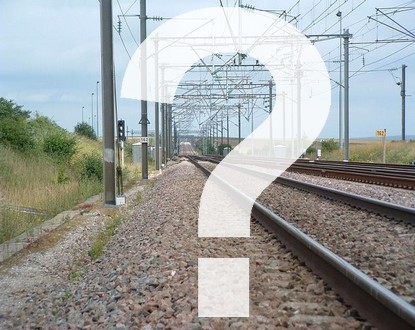The Green Representatives from Nice and Eastern Alpes-Maritimes are requesting that the Franco-Italian-Monegasque High-Speed Rail Link (LGV) be prioritized and become the “high-performance laboratory” for the LGV PACA.
The Historical Position of the Greens
Since the first national public debate commission on the construction of a high-speed line, “Les Verts” (now Europe-Ecology-The Greens) have called for the development of a regional rail network with “high performance” and not just the construction of a Very High-Speed line.
The conclusions from the consultation last fall on the Marseille-Nice link revealed the Green Party’s position as visionary and pioneering was evident: the high demand of the Mediterranean territory requires providing its populations with a quality service to meet the ecological challenges that impose themselves on us in terms of the mobility of goods and people (TER-GV, freight…). These orientations were agreed upon during the Steering Committee on December 22nd, transitioning from a high-speed line project to a rapid regional service project.
“Serving residents with a fast and efficient service, rather than a very high-speed line to transport deputies!” say the Green representatives.
A Unique Solution Without Alternative
The territory of Eastern Alpes-Maritimes, which, it is regrettable, was not the subject of a “public debate” but only a timid “consultation,” has the peculiarity of having no alternative but to build a high-performance line.
In fact, constructing a Very High-Speed arc would be extremely costly, thus “unfinanceable,” and above all inoperative.
This segment should, at a minimum, serve Nice, Monaco, and Ventimiglia, where the short distances between each of these stations (10 to 20 km) do not allow for reaching high speeds (300 km/h). A high-performance regional network achieving 200 km/h would be largely satisfactory and would enable rapid service to territories while halving construction costs (2.5 billion versus the original 5).
Only a high-performance infrastructure, like the one implemented in Italy, will effectively serve the agglomerations of Nice, Monaco, Menton, and Ventimiglia.
A Need for Modal Shift
This section of the TER line is currently the busiest in France (excluding Parisian trains), and its demand has significantly increased.
The implementation of the Priori’T plan initiated by the Region under the leadership of Jean-Yves Petit, Vice-President in charge of Transportation, demonstrated that if the TER service was of quality (record punctuality figures), demand was met: as evidence, a 19% increase in ridership of the coastal line and over 23% for the eastern part of Alpes-Maritimes in one year.
The ecological challenges awaiting us, notably due to energy resource scarcity and climate disruptions, will affect transportation. These challenges urgently require us to implement a sustainable high-speed mobility policy promoting the modal shift towards trains for daily commutes.
One of the main conclusions from the studies submitted for consultation is that developing the TER in the PACA region, and therefore between Nice and Ventimiglia, will require doubling the track so that the “historical” line can be dedicated to TER traffic. The new track will then accommodate long-distance mixed traffic – freight, high-speed TER (TER-GV), and national and international lines. This will ensure the reliability of the current line, which is fundamental for local development.
Constructing this infrastructure to the east of Nice requires finding a solution to cross Nice. Indeed, the studies presented guarantee the passage of 18 trains per hour on the two existing tracks, while this same infrastructure currently can’t properly handle half that number.
Short-term Deadlines
This judicious choice of high-performance line was made by the Italians, who chose to double their line rather than opt for very high-speed service bypassing the territories.
The Genoa-Ventimiglia line will be operational from 2014 and full service is scheduled for 2016 or 2018!
It would therefore be wise if the construction of the Nice-Ventimiglia segment is prioritized so that the Mediterranean rail arc between Barcelona and Genoa can be completed by 2023.
The Missing Link in the Mediterranean Arc
The Greens support European development, particularly through its rail infrastructures. The implementation of this new infrastructure, strengthening the cooperation of European regions, may benefit from European aid, which many European Green Representatives will fully support.
It seems vital to us that this high-performance regional network project reestablishes cross-border services between the Alpes-Maritimes Department and the Imperia Province and provides inter-regional service between Marseille and Genoa.
Therefore, the Green Representatives are asking that the current line be doubled with a high-performance rail infrastructure between Nice and Ventimiglia, in continuation of the Italian line and concurrent with its commissioning, to serve as a “laboratory” for the realization of the LGV in PACA.
Priority should be given to this international segment to lay the groundwork for a high-performance Mediterranean rail arc to address the ecological challenges of future generations.
The lessons learned from constructing this line by 2023 will demonstrate that the rail development model proposed by the Greens, both for goods and people, is indeed the most suitable for the needs of our territory, its inhabitants, and its economy.



